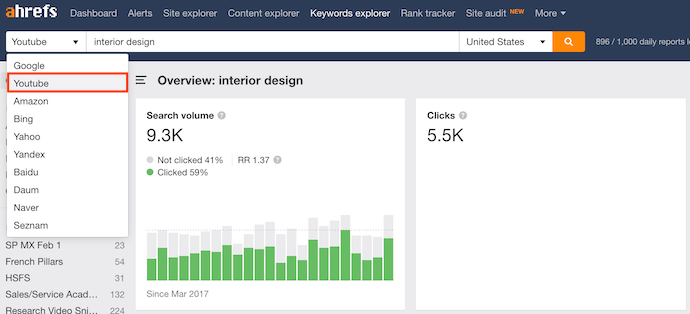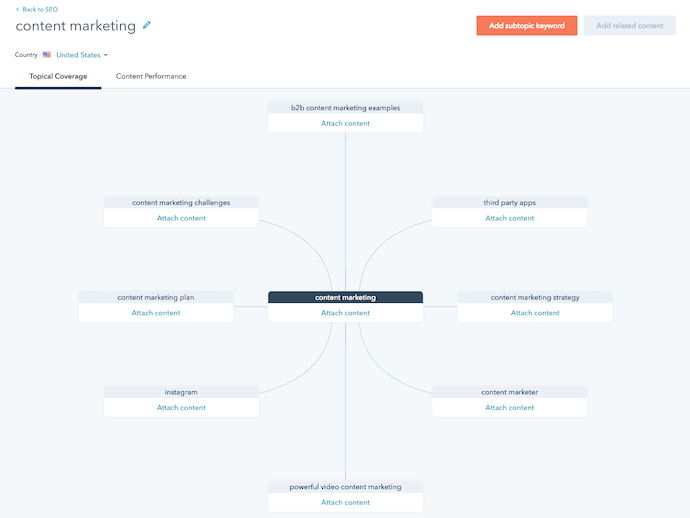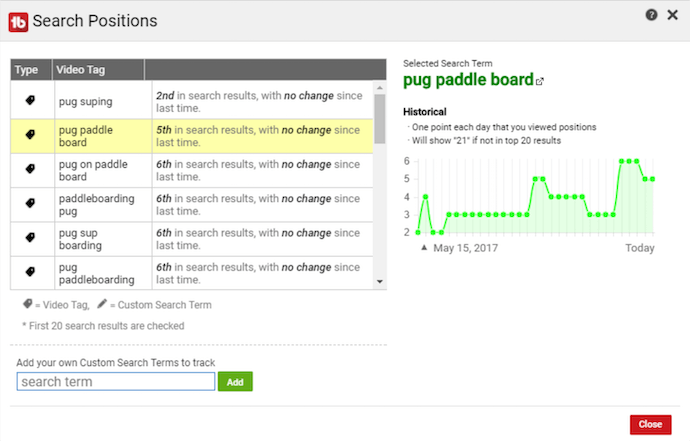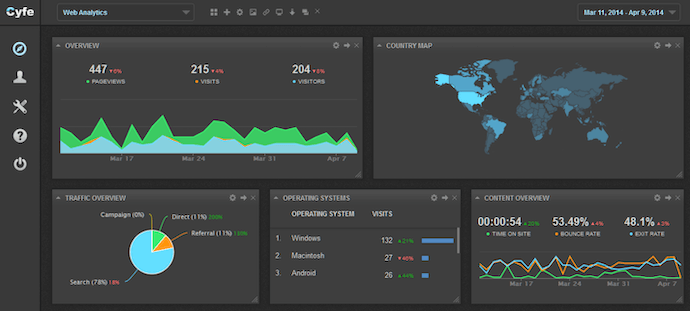Now, most of the SEO methods rely on determining a keyword and properly advertising your video. And not all of those suggestions can be implemented only through YouTube. Consider using some of the tools listed below to optimize your videos for search.
1. Ahrefs Keywords Explorer

Ahrefs is a complete SEO software that lets you:
- Track a website’s rating.
- Predict the organic traffic you’ll get from each phrase.
- Find keywords for which you might wish to write fresh content.
Keywords Explorer is a popular tool of Ahrefs that allows you to check up a lot of information about a term you’re interested in. You may also restrict your term results by search engine, as shown in the picture above. This includes YouTube.
The Ahrefs Keywords Explorer displays the monthly search volume for a term, and the number of clicks obtained by videos ranking for that keyword, similar keywords, and more.
2. Canva
You may be familiar with Canva as a design template for making various cards, photographs, logos, and other items. This famous product, it just so happens, features a Thumbnail Creator just for YouTube videos.
Thumbnail pictures are crucial to attract visitors to click on your video, as indicated in the suggestions above. You may use Canva’s Thumbnail Creator to produce the perfect preview graphic for your movie in the 1280 x 720 pixel proportions required by YouTube. Appling this way properly will help to optimize your videos for search.
3. HubSpot Content Strategy
Our content strategy tool, which we built here at HubSpot, helps you to uncover popular keywords for which to write content and then arrange those keywords into “subject clusters,” or groups of keywords. You can keep track of which pieces of content are connected to one another, what sorts of material you have planned, and what you’ve previously published by organizing your content into subject clusters.
While the keywords you see in HubSpot mirror their popularity on Google, many of these themes will also create videos on Google’s search engine results pages. In certain situations, you may develop subject clusters that include both blog and YouTube material.
Clustering your material — and connecting from videos to blog entries and vice versa — may give you greater authority in Google’s and YouTube’s eyes, as well as additional opportunities to grab traffic from individuals searching your topic.
4. vidIQ Vision
This is a Chrome extension that lets you evaluate how and why particular YouTube videos do so well. It’s accessible through Chrome’s web store at the link above. This covers the tags that a video has been optimized for, as well as the average view time and how rapidly the video is getting traffic.
The vidIQ tool then gives you an SEO “score” that you may use to develop content that matches (or beats) the results you see on YouTube.
5. TubeBuddy
TubeBuddy is an all-in-one video platform that lets you manage your YouTube content production, optimization, and promotion. It has a keyword explorer, tag recommendations, a rank tracker for your published videos, and other features, such as an automated language translator (which helps you rank for non-English keywords).
6. Cyfe
Cyfe is a huge software suite that includes a web analytics platform, among other things. You may use this platform to measure page performance across all of your internet properties, including YouTube, as well as where each page’s traffic is coming from.
Cyfe can show you the most popular keywords across major search engines, in addition to traffic metrics. Isn’t it similar to Google Analytics or Moz? That’s because Cyfe includes data from both of those technologies, as well as others.
A successful YouTube channel starts with strong material, regardless of the SEO advice or tool you use. When your viewers find you, make sure they have something high-quality and relevant to watch. Do you want step-by-step instructions? Below is a link to our free YouTube for Business tutorial.






